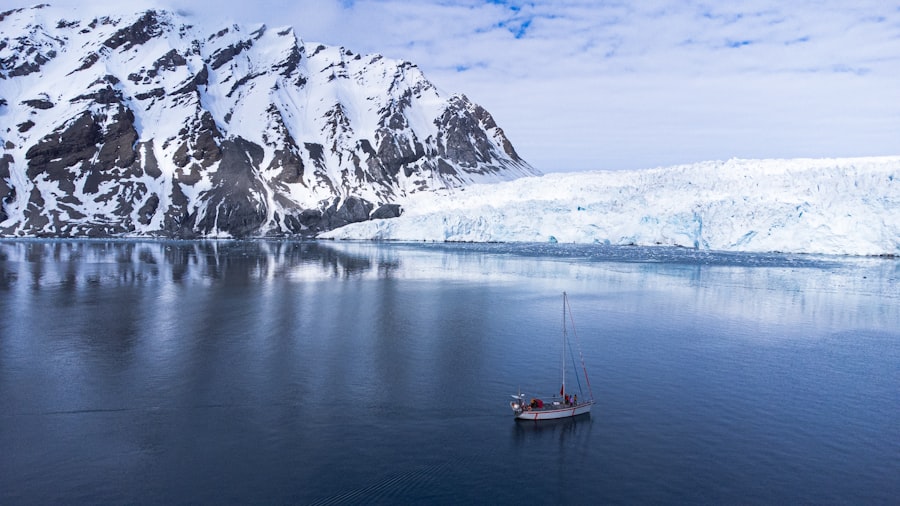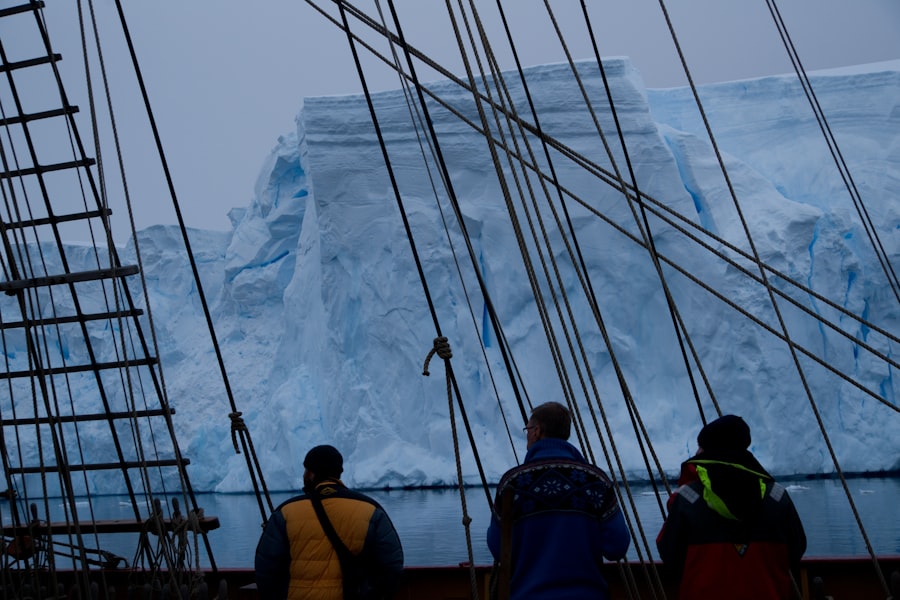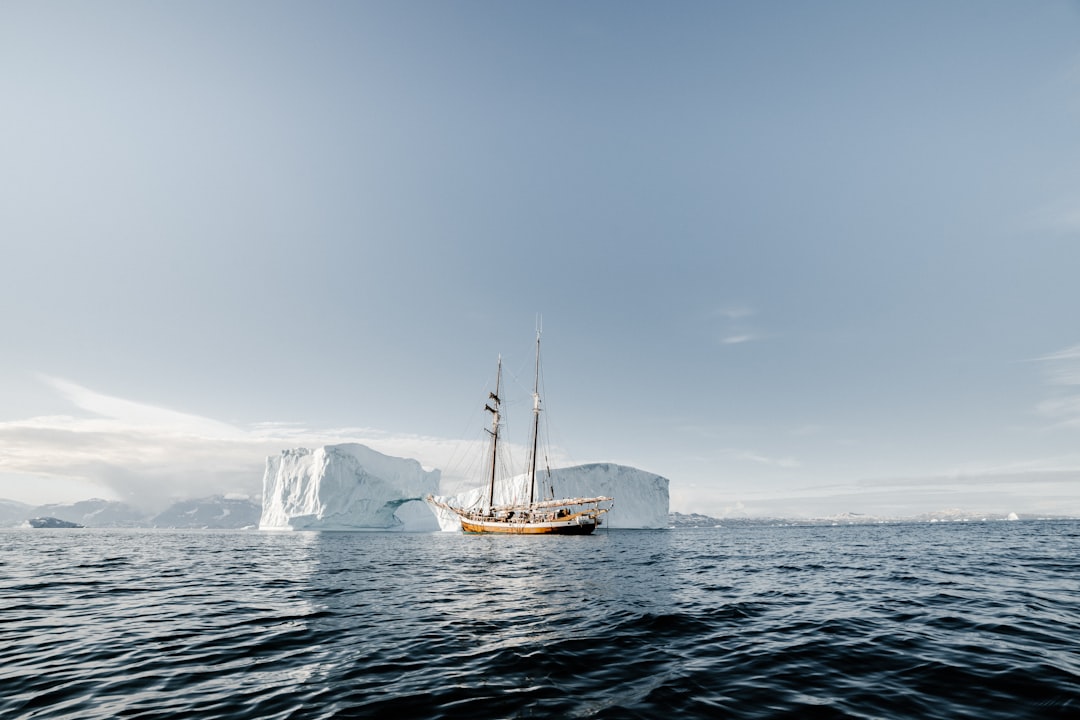The Drake Passage, a body of water that separates South America from Antarctica, is renowned for its tumultuous seas and rich marine biodiversity. This narrow stretch of ocean, measuring approximately 800 kilometers (500 miles) wide, serves as a critical conduit for maritime traffic between the Atlantic and Pacific Oceans. It is not only a geographical marvel but also a significant area for scientific research and exploration.
The passage has captured the imagination of adventurers, scientists, and nature enthusiasts alike, drawing them to its unpredictable waters and the promise of discovery. The allure of the Drake Passage lies not only in its geographical significance but also in its historical context. It has been a pivotal route for explorers since the Age of Discovery, serving as a gateway to the icy continent of Antarctica.
The passage is often characterized by its rough seas and challenging weather conditions, which have made it both a feared and respected route for sailors. As travelers embark on journeys through these waters, they are often met with awe-inspiring views of the Southern Ocean and the surrounding landscapes, making the Drake Passage a fascinating subject of study and exploration.
Key Takeaways
- The Drake Passage is a body of water between South America’s Cape Horn and the South Shetland Islands of Antarctica.
- The Drake Passage is known for its rough seas and strong winds, making it a challenging and dangerous crossing for ships and travelers.
- The climate in the Drake Passage is characterized by strong winds, high waves, and rapidly changing weather conditions, making it one of the roughest seas in the world.
- The Drake Passage is home to a diverse range of wildlife, including whales, seals, and various seabird species, making it a popular destination for wildlife enthusiasts and researchers.
- Traveling through the Drake Passage requires careful planning, preparation, and a sturdy vessel to navigate the challenging conditions, making it an unforgettable and adventurous journey for those seeking to reach Antarctica.
The Geography and Location of the Drake Passage
Geographically, the Drake Passage is situated between Cape Horn at the southern tip of South America and the Antarctic Peninsula. This strategic location makes it a vital link between two major oceans, facilitating the exchange of water masses and influencing global ocean currents. The passage is characterized by its deep waters, with depths reaching over 5,000 meters (16,404 feet) in some areas.
The underwater topography includes various features such as ridges and valleys, which contribute to the unique marine ecosystem found in these waters. The geographical significance of the Drake Passage extends beyond its physical dimensions. It plays a crucial role in regulating climate patterns and oceanic circulation.
The convergence of cold Antarctic waters with warmer currents from the north creates a dynamic environment that supports a diverse range of marine life. This interaction between different water masses also contributes to the formation of weather systems that can impact regions far beyond the passage itself. As such, understanding the geography of the Drake Passage is essential for comprehending its broader ecological and climatic implications.
The History of the Drake Passage

The history of the Drake Passage is steeped in exploration and adventure. Named after Sir Francis Drake, an English sea captain who navigated these waters in the late 16th century, the passage has long been associated with maritime exploration. Drake’s journey marked one of the first recorded crossings of this treacherous route, paving the way for future explorers who sought to chart unknown territories.
His exploits not only contributed to the mapping of the region but also ignited interest in the potential resources and lands that lay beyond. Throughout the centuries, numerous expeditions have traversed the Drake Passage, each contributing to our understanding of this formidable body of water. From early whalers and sealers to modern-day researchers and tourists, the passage has served as a gateway to Antarctica’s vast wilderness.
The historical significance of these journeys cannot be overstated; they have shaped our knowledge of navigation, oceanography, and even climate science. As explorers braved the unpredictable conditions of the Drake Passage, they laid the groundwork for future generations to continue their quest for knowledge and discovery.
The Climate and Weather Conditions in the Drake Passage
| Month | Average Temperature (°C) | Wind Speed (km/h) | Precipitation (mm) |
|---|---|---|---|
| January | 5 | 35 | 80 |
| February | 4 | 40 | 90 |
| March | 3 | 45 | 100 |
| April | 1 | 50 | 110 |
| May | -1 | 55 | 120 |
| June | -3 | 60 | 130 |
| July | -4 | 65 | 140 |
| August | -3 | 60 | 130 |
| September | -1 | 55 | 120 |
| October | 1 | 50 | 110 |
| November | 3 | 45 | 100 |
| December | 4 | 40 | 90 |
The climate in the Drake Passage is notoriously volatile, characterized by strong winds, rapidly changing weather patterns, and rough seas. The region experiences a maritime climate influenced by both polar and temperate air masses, resulting in frequent storms and unpredictable conditions. Sailors navigating these waters must be prepared for sudden shifts in weather, as calm seas can quickly transform into turbulent waves within a matter of hours.
Temperatures in the Drake Passage vary significantly throughout the year, with summer months (December to February) offering milder conditions compared to the harsh winters (June to August). During summer, temperatures can range from 0°C to 10°C (32°F to 50°F), while winter temperatures often plummet below freezing. The combination of cold Antarctic waters and warmer air currents creates an environment ripe for fog and precipitation, further complicating navigation.
Understanding these climatic challenges is essential for anyone planning to traverse this remarkable yet demanding passage.
Wildlife and Marine Life in the Drake Passage
The Drake Passage is home to an astonishing array of wildlife and marine life, making it one of the most biodiverse regions in the Southern Ocean. The nutrient-rich waters support a thriving ecosystem that includes various species of fish, krill, seals, and seabirds. Among its most notable inhabitants are several species of whales, including humpback whales, orcas, and blue whales, which migrate through these waters in search of food during certain times of the year.
In addition to marine mammals, the passage is also a haven for seabirds such as albatrosses and petrels. These birds are often seen gliding gracefully over the waves, taking advantage of the strong winds that characterize this region. The presence of such diverse wildlife not only enhances the ecological significance of the Drake Passage but also attracts researchers and nature enthusiasts eager to observe these magnificent creatures in their natural habitat.
The interplay between marine life and their environment underscores the importance of conservation efforts aimed at preserving this unique ecosystem.
The Challenges and Dangers of Crossing the Drake Passage

Crossing the Drake Passage is often regarded as one of the most challenging maritime endeavors due to its notorious reputation for rough seas and unpredictable weather conditions. Sailors must contend with powerful currents, high waves, and sudden storms that can arise without warning. These factors make navigation particularly treacherous, requiring skilled seamanship and thorough preparation.
The dangers associated with traversing this passage extend beyond just rough waters; they also include potential encounters with icebergs and floating debris. As vessels navigate through these icy waters, they must remain vigilant to avoid collisions that could jeopardize both crew safety and ship integrity. Additionally, the isolation of the passage means that assistance may be far away in case of emergencies, further heightening the risks involved in crossing this formidable stretch of ocean.
Methods of Traveling Across the Drake Passage
Traveling across the Drake Passage can be accomplished through various means, each offering a unique experience for adventurers seeking to explore this remarkable region. One popular method is by cruise ship or expedition vessel, which provides travelers with comfortable accommodations while navigating through these challenging waters. Many cruise lines offer specialized itineraries that include educational programs about wildlife and environmental conservation, enhancing passengers’ understanding of this unique ecosystem.
For those seeking a more adventurous experience, sailing on smaller yachts or charter boats presents an opportunity for hands-on navigation through the passage.
Regardless of the chosen method, crossing the Drake Passage remains an unforgettable journey that offers breathtaking views and a profound connection to nature.
The Importance of the Drake Passage for Scientific Research
The Drake Passage plays a crucial role in scientific research due to its unique geographical features and diverse marine life. Researchers from around the world flock to this region to study ocean currents, climate change impacts, and marine ecosystems. The convergence of cold Antarctic waters with warmer currents creates an ideal environment for studying how these interactions influence global climate patterns.
Moreover, ongoing research in the Drake Passage contributes significantly to our understanding of biodiversity in polar regions. Scientists conduct studies on various species inhabiting these waters, examining their behaviors, migration patterns, and responses to environmental changes. This research not only enhances knowledge about marine life but also informs conservation efforts aimed at protecting vulnerable species and habitats within this critical ecosystem.
Famous Expeditions and Explorations in the Drake Passage
Throughout history, numerous famous expeditions have traversed the Drake Passage, each contributing to our understanding of this challenging route and its surrounding regions. One notable expedition was led by Ernest Shackleton during his ill-fated attempt to cross Antarctica in 1914-1916. Shackleton’s journey through these treacherous waters became legendary due to his crew’s remarkable survival against all odds after their ship became trapped in ice.
Another significant exploration was conducted by Robert Falcon Scott during his Terra Nova Expedition (1910-1913). Scott’s team faced immense challenges while navigating through the Drake Passage en route to Antarctica’s South Pole. Their experiences highlighted both the dangers inherent in polar exploration and the resilience required to overcome them.
These expeditions not only advanced scientific knowledge but also inspired future generations to continue exploring this remote part of our planet.
Tips for Traveling Through the Drake Passage
For those planning to travel through the Drake Passage, preparation is key to ensuring a safe and enjoyable journey. First and foremost, travelers should choose a reputable cruise line or expedition company with experience navigating these waters. Researching itineraries that prioritize safety measures and provide knowledgeable guides can enhance overall experiences.
Packing appropriately is also essential; layers are recommended due to fluctuating temperatures and potential weather changes. Waterproof gear is advisable for those venturing onto deck during rough seas or inclement weather conditions. Additionally, travelers should be prepared for motion sickness by bringing necessary medications or remedies to alleviate discomfort during turbulent crossings.
The Fascinating Journey to Antarctica through the Drake Passage
The journey through the Drake Passage represents more than just a physical crossing; it embodies an adventure filled with discovery, challenge, and awe-inspiring beauty. As travelers navigate these unpredictable waters en route to Antarctica’s pristine landscapes, they become part of a long tradition of exploration that has shaped our understanding of this remote region. From its rich history steeped in exploration to its vital role in scientific research today, the Drake Passage continues to captivate those who dare to traverse its depths.
Whether observing majestic whales breaching against a backdrop of rugged cliffs or witnessing breathtaking sunsets over turbulent seas, each moment spent in this remarkable passage leaves an indelible mark on those fortunate enough to experience it firsthand. Ultimately, crossing the Drake Passage is not merely about reaching a destination; it is about embracing an extraordinary journey into one of Earth’s last frontiers.
The Drake Passage, a notorious stretch of water between the southern tip of South America and Antarctica, is approximately 800 kilometers (500 miles) wide and is known for its challenging sailing conditions. Travelers often wonder about the duration of the journey across this passage, which can vary depending on weather conditions and the type of vessel. For those interested in learning more about the geographical and historical significance of the Drake Passage, a related article can be found on MyGeoQuest, which provides insights into the unique challenges and experiences of navigating this formidable body of water.
WATCH NOW! Drake Passage: Earth’s Deadliest Waters Revealed
FAQs
What is the Drake Passage?
The Drake Passage is the body of water between the southern tip of South America and the northern tip of the Antarctic Peninsula. It is known for its rough seas and challenging sailing conditions.
How long is the Drake Passage?
The Drake Passage is approximately 600 miles (970 kilometers) wide.
How long does it take to cross the Drake Passage?
The time it takes to cross the Drake Passage can vary depending on weather conditions and the type of vessel being used. On average, it takes about 2-3 days to cross the Drake Passage.
What is the best time to cross the Drake Passage?
The best time to cross the Drake Passage is during the austral summer (November to March) when the weather is relatively milder and the seas are calmer.
